- News
- Events
- Oneg Shabbat
- Collections
- Research
- Exhibitions
- Education
- Publishing Department
- Genealogy
- About the Institute
- Bookstore

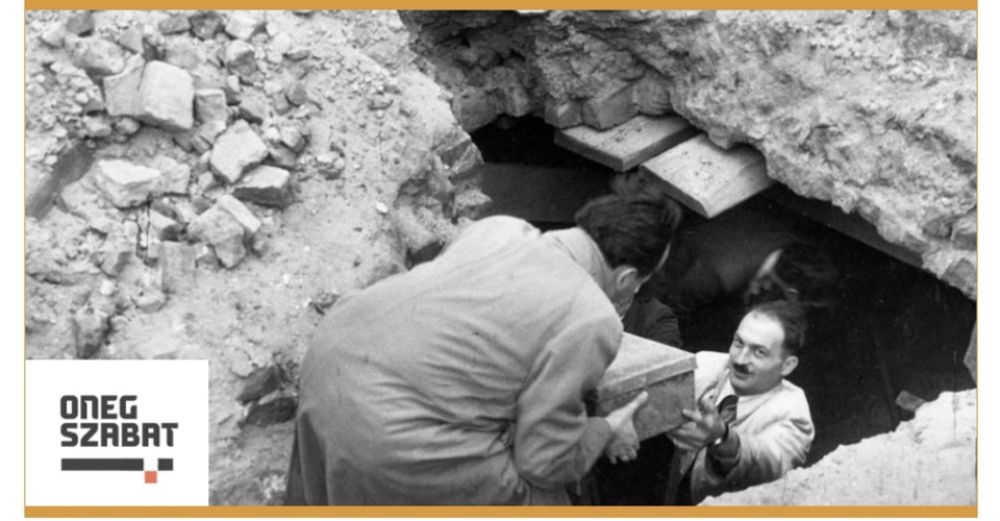
Unearthing of the first part of the Ringelblum Archive. In the picture: Michał Borwicz and Hersz Wasser /
Izrael Lichtensztajn, Emanuel Ringelblum’s close associate, worked at the Ber Borochov school at 68 Nowolipki street. Together with Dawid Graber and Nachum Grzywacz, students who were privy to Oneg Shabbat’s secret works – he was responsible for gathering and securing the Underground Archive of the Warsaw Ghetto, and eventually – for hiding it in the basement of the school.
According to Dawid Graber’s account, the documentation had been collected at the Borochov school since late 1941-early 1942, when information about the destruction of the Jewish Scientific Institute (YIVO) in Vilnius arrived in Warsaw. According to A. Bańkowska and A. Haska, hiding the first part of the Archive in metal boxes (15 x 30 x 50 cm) mst have taken several days, as proven by excerpts from Abraham Lewin’s diaries and Izrael Lichtensztajn and Gela Seksztajn testaments. [1] The last part of the documents was buried on 3 August 1942 at 4 PM, which we know from Dawid Graber’s testament. People who certainly knew about the location of the documents were Hersz Wasser and Emanuel Ringelblum, who postulated to pass the address to YIVO and Rafał Mahler in New York. [2]
After the Great Deportation, communication between the surviving members of Oneg Shabbat became more difficult, hence the circumstances and time of hiding the second part of the materials remain unknown. Because the latest document from the second part of the Archive is an issue of the „Biuletyn Informacyjny Żagiew” periodical from 1 February 1943, it is assumed that it must have been February 1943 [3]. Soon, Rachela Auerbach and Emanuel Ringelblum had left the Ghetto, and the only Oneg Shabbat members who remained inside were: Hersz Wasser, Eliasz Gutkowski, Izrael Lichtensztejn, Menachem Kohn and Szmuel Winter. [4] According to Wasser, the group had been active until April 1943, still collecting documents. There is a hypothesis that they were hidden in an underground storage at 34 Świętojerska street.
Even if the ruins reach five storeys high, we must find the Archive!
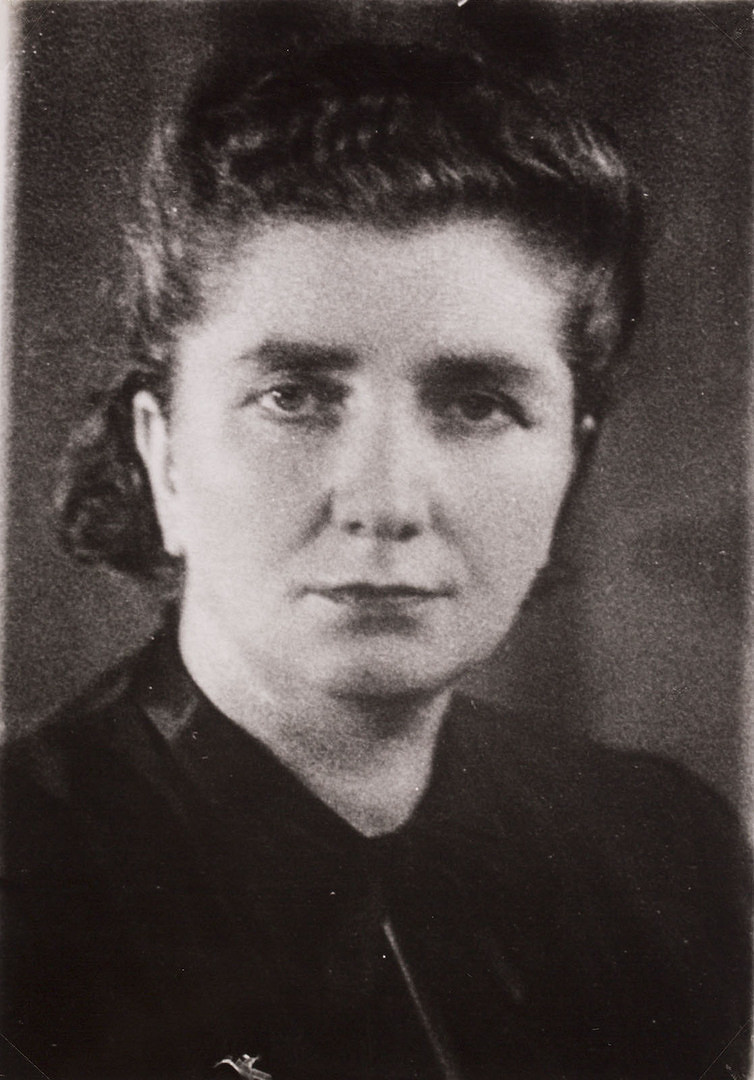
Rachela Auerbach was one of only three people from the group of Emanuel Ringelblum’s closest associates – aside from Bluma and Hersz Wasser – who had survived the war. Still, only Hersz Wasser (who managed to jump out of a train going to Treblinka in 1943) knew where the Ringelblum Archive was exactly located. Even though finding the Ringelblum Archive became a priority issue after the war – discussed at the meeting of the Board of the Central Committee of Jews in Poland on 4 June 1945 – the operation was difficult and complex, both due to the financial cituation of the CCJP, as well as the high cost of the excavation works, which required digging through tons of rubble. Still, the effort continued. Rachela Auerbach called for beginning of the excavation works and for financial support (for example during the commemoration of the third anniversary of the Ghetto Uprising). The permission to begin excavation works was obtained in mid-August 1945, but preparations took another year. Eventually, the works began in mid-September 1946, thanks to funding from the American Jewish Labor Committee.
On 18 September 1946, in the afternoon, ten metal boxes with the first part of the Archive were unearthed. Michał Borwicz described this moment in words which are worth quoting in full:
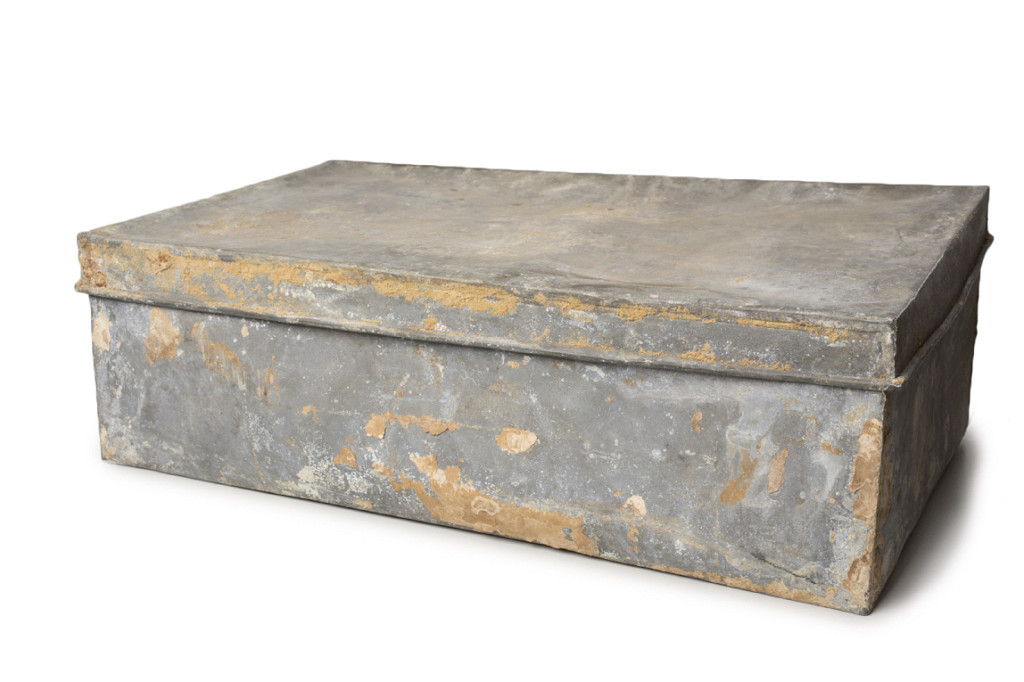
Where was the Archive buried? Our colleague Wasser, present during the unearthing, was there, when the boxes were being hidden. But back then, you walked in differently; our directions were confused. Once the ceiling was „propped”, the digging began; we knew that the Archive we are searching for could be hidden one meter deep underground. The shovels were throwing away one decimeter of soil after another. We were stood there – the members of the Historical Commission: Wulf, Blumental, Wasser and me, we looked at each other, guessing by our looks the same thoughts: will it happen at all...? Suddenly, a shovel came across „something hard”. After a while, the first metal box emerged. In the second chamber – two other ones... the moment of discovering the underground archive was followed by deep emotion. [6]
This moment was recreated on film by Natan Gross – where the boxes were lifted by Michał Borwicz and Hersz Wasser. The recording was used in the film Mir lebngebliebene (We, the survivors, 1948).
Transcription of the documents began on 23 September, at the office of the CJHC at Sienna street, in the former Berson and Bauman hospital. The documents were in a catastrophic condition. The boxes weren’t properly welded and water leaked in. According to Michał Borwicz, Dangerous mushrooms have developed inside. Bundles of precious documents have absorbed water and swollen, so they lay close to each other, tightly adjusted to the metal walls. As a result, it may seem that the box is full of a wet, flexible mass. In order not to damage it during taking out, the metal is being torn. Now, each of these pieces of paper, of whose there are thousands, has to be carefully separated from the rest, then spread on tissue paper, which has to be regularly replaced. Thin paper – which was often used for writing preserved documents – which had been leaked on for four years breaks at a slightest shock. As the works develop, floors, tables and shelves in the large hall (turned into conservators’ workshop) are covered with growths of books, sheets, pieces wrapped in filtering tissue paper. Objects are undergoing surgeries and diets, are going through recovery period and slowly return to their original shape. Certain documents, written with „wartime ink”, were completely damaged by water. But these are only exceptions. In most cases, the writing was well preserved, both ink and pencil. The same with numerous prints, typed documents, copies. Photographs have suffered more. Moisture damaged layers of emulsion and glued together whole piles of prints. [7]
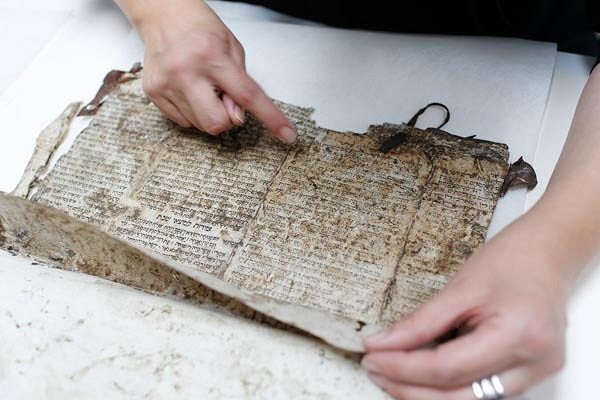
The documents were carefully described and secured. Until 25 November 1946, the work had been done by a team of ten people. As Eleonora Bergman notes, Wasser’s contribution mustn’t be ovelooked: he was marking documents with cards including informations about authors or contributors, which he only knew. Without these cards, out knowledge would be much smaller. [8]
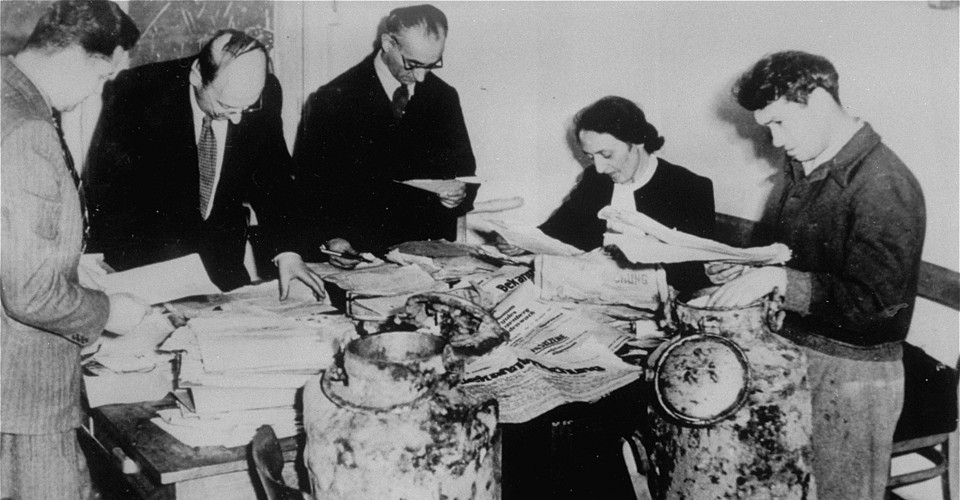
The second part of the Ringelblum Archive was accindetally discovered during construction works at the Muranów estate, on 1 December 1950.
Preserving the Ringelblum Archive
The preservation works on the Ringelblum Archive have been continuing for 72 years. The most important conservation works have begun in 1990, thanks to a significant contribution from The United States Holocaust Memorial Museum (USHMM) in Washington. The Museum has also funded a new inventory, directed by Professor Tadeusz Epsztein.
In 1997, the first volume of the complete edition of the Ringelblum Archive was issued, and two years later, the Ringelblum Archive was included on the UNESCO „Memory of the World” list.
In 2012, the Jewish Historical Institute received a grant from the National Program for the Development of Humanities, which had significantly accelerated the work on the complete edition of the Archive. The scientific editor was Prof. Tadeusz Epsztein, and the manager – Dr Eleonora Bergman, followed in 2015 by Dr Katarzyna Person. The cooperation between the Institute and a wide array of historians, sociologists, philosophers, literature researchers, editors and renowned translators resulted in the 38-volume publication.
The Oneg Szabat Program
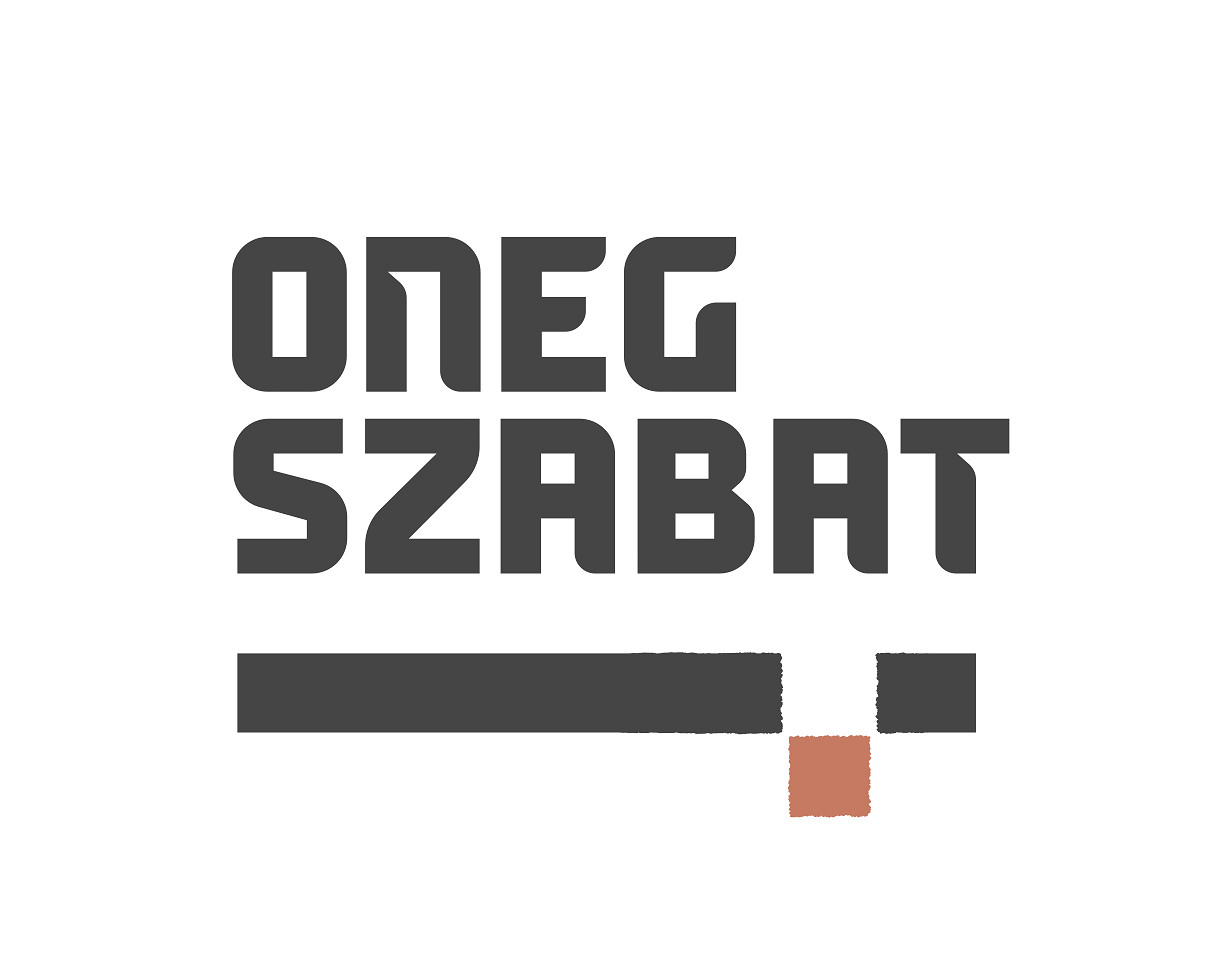
On 18 September 2017, on the 71th anniversary of discovering the first part of the Archive, the Jewish Historical Institute and the Association of the Jewish Historical Institute of Poland have announced the international Oneg Szabat Program, aimed at popularizing knowledge about the Underground Archive of the Warsaw Ghetto and commemorating the members of the Oneg Shabbat group.
The most important task of the Program is to make the documents of the Underground Archive of the Warsaw Ghetto available to people worldwide. They were digitalized and published in their entirety at the Central Jewish Library website and on the Delet portal.
Last year, the works on translating the documents and their editions to English have begun. This great enterprise is going to span many years. The launch was possible thanks to support from our Donators: Rothschild Foundation, Rozen Family Foundation and Taube Philanthropies. The first volume, Warsaw Ghetto. Everyday Life, edited by Dr Katarzyna Person, has already been published. This Autumn, we intend to publish the second volume, Accounts from the Eastern Borderlands, edited by Prof. Andrzej Żbikowski.
In November 2017, in the building where Emanuel Ringelblum worked and where the Underground Archive of the Warsaw Ghetto was being developed, the Jewish Historical Institute and the Association of the Jewish Historical Institute of Poland have opened the permanent exhibition – What we were unable to shout out to the world, which presents original documents from the Archive. In the first six months, the exhibition has been visited by over 15,000 guests. The exhibition is complemented by an educational project aimed at Polish and international school and university students. The workshops have been already attended by more than 250 students and teachers.
We are also planning to organize a series of travelling exhibitions, which will tell the story of the Ringelblum Archive and the Oneg Shabbat group in the most renowned museums in the world, in cooperation with their curators.
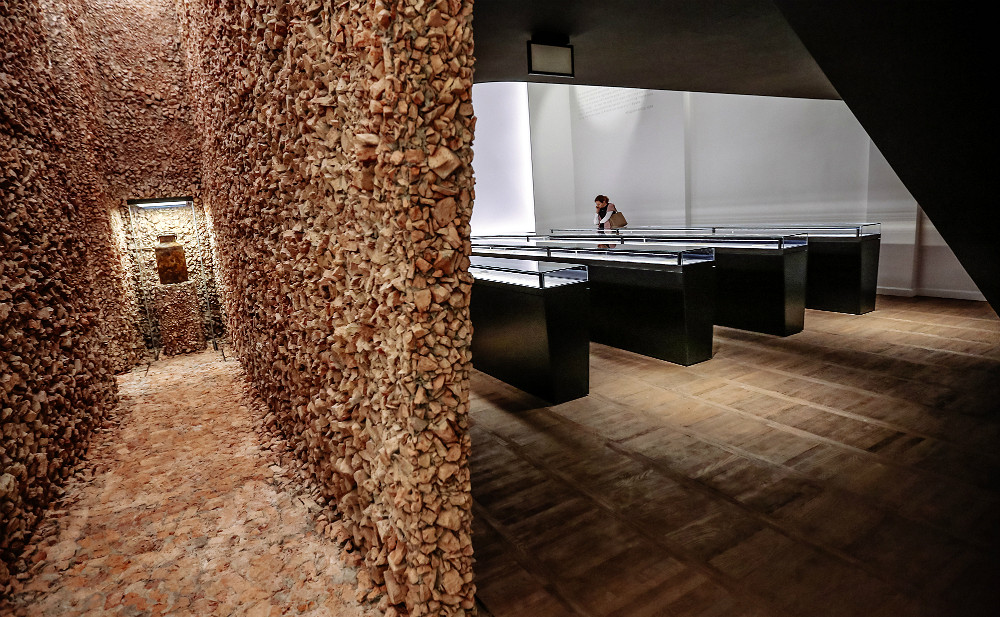
In early 2018, we have launched a communications campaign aimed at students from Poland, the US, Canada and Australia. In March 2018, we have ran a pilot edition of the Oneg Shabbat Ambassadors program with a group of students from the University of Pensylvania Hillel. We have prepared workshops and meetings with the Ringelbum Archive researchers.
At the onegszabat.org page, we are publishing the most important information about the creators of the Archive – their life and death, their choices, challenges and the community they created.
At the Oneg Szabat profile on Facebook, we recall the most important dates and events related to the creators of the Ringelblum Archive and the times in which it was created. We also publish regularly information about all the projects developed within the Program.
The Program is being joined by increasingly more people worldwide. Regardless of age, education, religion or residence, they find importance and resonance in the words of Dawid Graber, written in his testament just before the Archive was buried: It is enough for me that the future generations will remember about our times (…) May this treasure end up in good hands, may it live to see better times, may it alert the world about things that happened in the 20th century.
It is time for us to care for this great legacy. Thank you!

The Oneg Szabat Program is implemented by the Emanuel Ringelblum Jewish Historical Institute and the Association of the Jewish Historical Institute of Poland, within a public-private partnership.
Footnotes:
[1] Aleksandra Bańkowska, Agnieszka Haska,...w podziemiach wymienionych domów zakopane są... Poszukiwania Archiwum Ringelbluma, Zagłada Żydów. Studia i materiały, nr 12/2006, s. 321.
[2] Tamże, s. 322.
[3] Tamże.
[4] Samuel D. Kassow, Kto napisze naszą historię? Ukryte Archiwum Emanuela Ringelbluma, przekł. Grażyna Waluga, Olga Zienkiewicz, Wyd. ŻIH, Warszawa 2017.
[5] Eleonora Bergman, Opublikować wszystko, do ostatniego papierka. Od odnalezienia do pełnego wydania Archiwum Ringelbluma, Midrasz. Pismo Żydowskie, styczeń/luty 2017, nr 1 (195).
[6] Michał Borwicz, Pieśń ujdzie cało… Antologia wierszy o Żydach pod okupacją niemiecką, Lublin 2012, s.42–45.
[7] Tamże.
[8] Eleonora Bergman, Opublikować wszystko, do ostatniego papierka. Od odnalezienia do pełnego wydania Archiwum Ringelbluma, Midrasz. Pismo Żydowskie, styczeń/luty 2017, nr 1 (195).
Bibliography:
Aleksandra Bańkowska, Agnieszka Haska,...w podziemiach wymienionych domów zakopane są... Poszukiwania Archiwum Ringelbluma, Zagłada Żydów. Studia i materiały, nr 12/2006.
Archiwum Ringelbluma. Konspiracyjne Archiwum Getta Warszawy, t. 11: Ludzie i prace „Oneg Szabat”, oprac. A. Bańkowska, T. Epsztein, Warszawa 2013.
Eleonora Bergman, Opublikować wszystko, do ostatniego papierka. Od odnalezienia do pełnego wydania Archiwum Ringelbluma, Midrasz. Pismo Żydowskie, styczeń/luty 2017, nr 1 (195).
„Pieśń ujdzie cało…”, Antologia wierszy o Żydach pod okupacją niemiecką, opracował i szkicem wstępnym poprzedził Michał M. Borwicz, 2012 Lublin, s.42–45.
Samuel D. Kassow, Kto napisze naszą historię? Ukryte Archiwum Emanuela Ringelbluma, przekł. Grażyna Waluga, Olga Zienkiewicz, Wyd. ŻIH, Warszawa 2017.